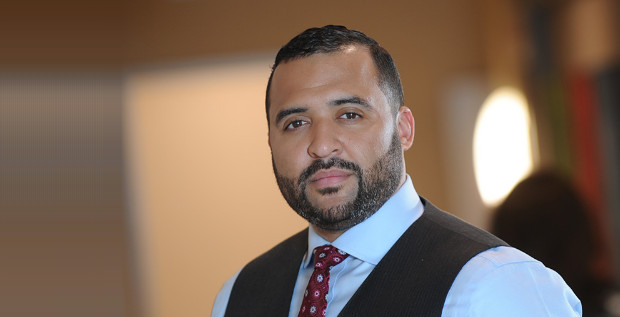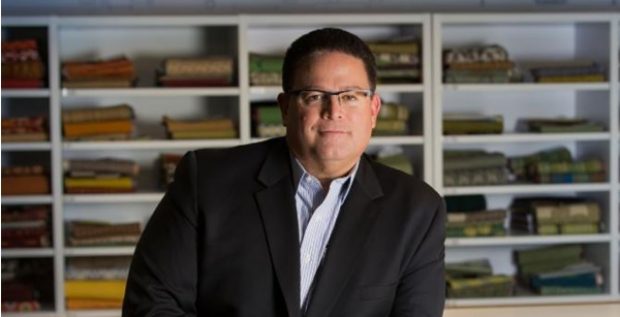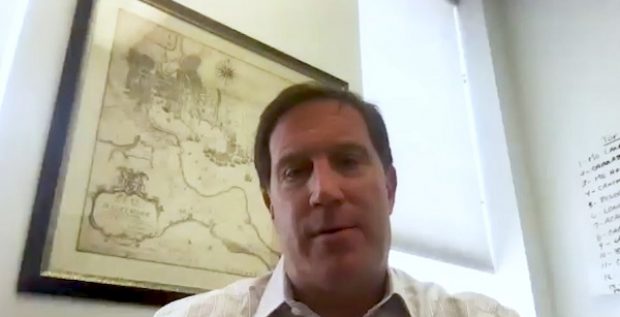Kevin Conklin is the Vice President of Operations for Pandora Americas. Founded in Copenhagen, Denmark, in 1982, Pandora is one of the world’s leading jewelry designers and manufacturers, with more than 9,000 points of sale spread among over 100 countries. The company employs more than 15,000 people, and in 2015, it garnered nearly $2.5 billion in global revenue. Pandora’s American branch, first established in 2003, today represents the company’s largest region. Formerly based in Columbia, MD, Pandora Americas recently moved its headquarters to downtown Baltimore—a decision which Kevin spearheaded.
Q. What were your primary concerns when moving office headquarters?
KEVIN CONKLIN: When we were looking at new office space, it was important for us to really concentrate on a few things for Pandora. First and foremost, it was important for our folks to be able to work in an environment that was creative. We also needed an environment that was open and full of energy, and that was equally important for us. Last but not least, we needed an environment that could stand the test of time. We needed a space that wouldn’t look old or tired over the next five to 20 years.
Q. How did you go about furnishing the interiors?
A. We looked at a quite few different vendors out there and what it came down to is we found American Office and Herman Miller’s product was far superior—but not just superior product: we found that customer service and service levels were ten times better than everybody else. It turned into less of a vendor relationship and truly into a partnership, and ultimately involved as they become an extension of Pandora—at least that’s how we felt.
Q. What distinguishes American Office and Herman Miller from other providers of interiors?
A. You know, I would say ultimately it is around the customer service. The product is by far superior and lasts and looks phenomenal. When you’re dealing with installation, when you’re dealing with design, we found that there was nobody better to work with American Office and Herman Miller.
Q. How important was space?
A. From our standpoint, it was critical. When you move into a downtown space, space is at a premium. It’s very expensive. The last thing we wanted as we grew, was to take on more floors—it to be too costly to to do that. So, working with American Office and Herman Miller, it became a very easy process for us to figure out and design product that would work and allow us to expand our personnel without actually expanding floors. Really, where they were superior for Pandora, was in the ability to work on that design and come up with solutions. It was a true business partnership.
Q. What other factors did you consider?
A. For Pandora when we were looking up locations we wanted to move to, it was important for us to retain our employee base. We did not want to lose them. So, one of the first things we did was we looked at a heat map and studied where all of our employees lived. Once we understood where they lived, it really narrowed down the locations for us of where we could possibly move. Downtown Baltimore was one of those key areas. Then, when we looked at downtown Baltimore, we had a few things that were important to us: ease of getting into the building. If you look at the Inner Harbor, it is very difficult to get down to Inner Harbor during rush hour traffic, and that’s not a good thing for productivity. We needed an environment for our folks to park: they’re used to parking in a normal parking lot, and so having a parking structure behind the building was a no-brainer for us here. Last but not least, two things that were critical for us: you can’t beat the view—I think the views here are better than anywhere else in Baltimore—and the fact that we can put naming rights on the building was very important for us as well.
Q. What are some of the major challenges in visualizing a space before it’s been furnished?
A. For us working with American Office and Herman Miller, there was a few things that really stood out that were critical for us. It’s one thing to be able to try to visualize and look at what the furniture is going to look and feel in the office environment. It’s even more important when you can actually get a 3D rendering of that product itself. A good example is my office, as well as the other cubes: we were actually able to see how the furniture would look and we could move it around within the office and that was a huge selling feature for us. It’s very important to not just hear how it’s going to look and feel, but actually be able to see it—that was a big deal for us. Then, when you look at the design features—which we’ve talked about already—as we continue to grow, we needed to be able to have flex space, so to speak. With the environment that we created with our cubes, and the design we have with our cubes, we can easily go from a three-person desk to a four-person desk overnight. The ability to hire new people and not have to wait three to six weeks for new furniture is a big deal for us, so we were very happy with that design.
Q. Would you recommend American Office and Herman Miller to others?
A. Using American Office and Herman Miller was not just about the technology piece of the customer service. It’s really about all of those things together. A good story that I like to share: I happened to be at a partner show in Miami and I was sitting next to our chief legal counsel, talking about his office. We were sketching a few items of how his office should look on paper. We liked it, so we sent it over to Carole in the American Office team to take a look. Within 20 to 30 minutes we had a 3D rendering sent back us to via email of exactly what our sketch should look like. Mac could actually see how his furniture would look—the colors and design. So, when you talk about features and opportunities like that, it’s huge and it makes it a no-brainer to go with Herman Miller and American Office.
Connect with Kevin on LinkedIn
















